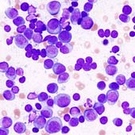The Majority Of Rare Myelomas Are Associated With Poorer Survival Than Common Myelomas

A recent European study reported poorer overall survival in patients with rare IgD, IgE, and IgM multiple myelomas following stem cell transplantation compared to patients with the more common IgG, IgA, or light chain myelomas. However, the overall survival of nonsecretory myeloma patients, another rare type of myeloma, was similar to that of common myeloma patients.
The authors added that the survival data from their analysis is better than previous data for patients with rare myelomas who received a stem cell transplant. They therefore recommended the continued use of transplantation as a treatment for patients with rare myelomas.
In healthy immune systems, normal plasma cells produce antibodies (also called immunoglobulins or Ig) to protect the body against invading pathogens. Patients with multiple myeloma have abnormal plasma cells, which instead produce an abnormal immunoglobulin called a monoclonal protein (or M protein).
The plasma cells of most myeloma patients produce IgA or IgG monoclonal proteins or secrete light chains (the building blocks of antibodies) in isolation. These patients are said to have a “common myeloma.” In rare cases, patients may produce IgD, IgE, or IgM monoclonal proteins. One percent of myeloma cases are nonsecretory, whereby the patient may not produce immunoglobulins at all.
IgD and nonsecretory myelomas are slightly more common than IgM (rare) and IgE (extremely rare). Previous research has shown that although survival for IgD myeloma is poorer than for common myelomas, survival in nonsecretory myeloma is similar or possibly better than common myelomas.
In many trials, the number of patients with rare myelomas is too small to draw any conclusions regarding patient outcomes. As a result, relatively little is known about the outcome of patients with rare myelomas following stem cell transplantation.
In order to gather more information about rare myelomas, the researchers retrospectively analyzed data for 22,244 patients with multiple myeloma who underwent autologous stem cell transplantation between 1986 and 2007. Of the patients included in the analysis, 1,440 patients had rare myelomas.
IgD Myeloma
IgD myeloma patients responded better to treatment and had a higher complete remission rate than patients with common myelomas prior to and after stem cell transplantation. Nevertheless, the median survival of IgD patients was significantly lower than that of patients with common myelomas (44 versus 62 months). However, the median progression-free survival for IgD myeloma was comparable to that for common myelomas (24 versus 27 months).
According to the study authors, the poor median survival following transplantation could be explained by the fact that IgD myeloma patients frequently have more adverse prognostic factors. Although IgD myeloma affects younger individuals, these patients frequently have Stage 3 (advanced) disease and a greater number of bone fractures than patients with common myelomas.
IgM Myeloma
IgM myeloma patients achieved the poorest response prior to stem cell transplantation; out of all groups, IgM patients had the lowest complete remission rate (8 percent). Following transplant, the number of patients achieving complete response improved to 34 percent, and a similar number of patients achieved a partial response. The overall survival and progression-free survival data was similar to IgD myeloma.
IgE Myeloma
Despite achieving the highest proportion of complete remission prior to stem cell transplantation (33 percent), the median overall survival post-transplantation for IgE myeloma cases was the lowest of all myeloma groups (33 months). The progression-free survival was similar to or better than IgG and IgM myeloma. However, the study authors pointed out that the number of IgE myeloma patients in the study was too small to draw conclusions on their outcomes.
Nonsecretory Myeloma
Prior to transplant, nonsecretory myeloma patients responded better to treatment than patients with common myelomas, with a greater proportion of patients achieving complete remission (29 percent versus 12 percent). Nearly 49 percent of patients achieved a complete remission post-transplant, and the median survival of nonsecretory myeloma patients was slightly longer than for common myeloma patients (65 versus 62 months). The median progression-free survival for nonsecretory myeloma patients was significantly superior to that of patients with common myelomas (34 versus 24 months).
The researchers pointed out that similar to IgD myeloma, nonsecretory myeloma affects younger individuals, and these patients have more advanced disease and bone fractures than patients with common myelomas.
For more information, please refer to the study in the journal Haematologica (pdf).
Related Articles:
- None Found

